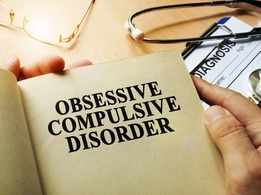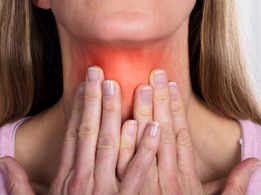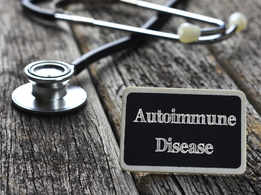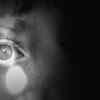01/10Did you have COVID-19 before?
)

The proportion of COVID cases across the world has been surging in a shocking manner, with over 80% people reporting mild infections. For some, experts say, the infection could be so mild, or low-range, that it could be super difficult to differentiate symptoms from that of a viral bug or a flu-like infection, implying that there could be so many people who could have already battled the virus, and successfully defeated it, without actually knowing it.
02/10Can your COVID-19 go undiagnosed?
)

Scientifically, it's not hard to understand. While COVID-19 is a heavy disease, making a recovery depends on how healthy your body is. Chances are, if you are healthy, young, and have no pre-existing conditions, you have higher odds of making an easier recovery, or suffering from a mild brush of the virus. While there's a lot of awareness about the signs and symptoms now, some of the COVID symptoms can be so mild, it can go unnoticed or are easy to be confused.
03/10Fever that lasted for more than 3 days
)

Presence of a low-grade fever (ranging around 99-100 degrees) for more than three days can be a sign of a COVID infection, especially if it is accompanied by headache, runny or itchy nose. According to WHO figures, nearly 87% of confirmed COVID cases report a sudden onset of a fever, so it is definitely a wise decision to look back at your symptoms in the past months.
04/10Reduced or loss of sense of smell and taste
)

A change in how your olfactory senses detect odours could be a tell-tale sign of a COVID infection. According to doctors, loss of smell or taste, also known as anosmia is observed in the mildest of infections and mostly happens when viral residue attacks the mucosal membranes in the nose, impairing your ability to detect smells in its entirety. Newer studies have also concluded that there are in fact, specific smells which COVID patients cannot recognize, including coconut and peppermint oil and continue to have a reduced sense of smell for months after the infection clears away. If you also experience gastrointestinal trouble or feel a reduction in your appetite, it could also mean COVID.
05/10Dry cough
)

There's a very specific type of cough associated with COVID infections- a dry cough. For some, dry, harsh cough with a sore throat could be an indicator of a COVID-19 active infection. Hence, it's really important that you lookout for this sign. Again, in the mildest of cases, a person can have a cough alone, and not experience any other sign at all, making COVID diagnosis trickier. Dry coughs are usually associated with allergies and external pollutants. So, if you had a lingering dry cough when it wasn't a definite allergy season, it could have been COVID.
06/10Pink eye
)

Experiencing a scratchy, runny, pink eye can feel unpleasant, and can also be a sign of mild conjunctivitis fueled by the SARS-COV-2 virus. It can be a possible way the virus could transmit when you constantly touch your eyes and skin around the face with dirty hands or come in contact with the virus through aerosol transmission.
07/10Skin rashes and COVID toes
)

Skin rashes and unique COVID toes, seen especially in young kids are the newest COVID symptom confusing people. It can happen when the virus causes active inflammation in the body, and cause the skin on your hands, abdomen, feet or around the toes to turn red, swell up, itch. For kids, who experience little to no symptoms, this can be the sign to look out for.
08/10Temporary chest pain and breathlessness
)

Breathlessness can be a sign of oxygen saturation dipping low, and require medical support. It can also be one of the signs of mild COVID infection if accompanied by a cough or a cold. Since breathlessness is also a sign COVID patients experience after defeating the infection, it could probably be a sign that goes unnoticed for those unaware of the signs and symptoms. For those with a severe infection, blue lips, discomfort, confusion and decline in cognition can also be experienced.
09/10Check for the timeline of your symptoms
)

Not that we are suggesting that the presence of all these symptoms mean COVID-19 for sure, but, experts have been suggesting that people who fell sick in the early months of the year, i.e., from January to April are much more likely to have suffered from COVID-19 since that was the time we were only beginning to know and learn the symptoms. Some studies have also suggested that case histories from November and December 2019 could also be an indicator of COVID circulating, in very mild forms.
10/10Is there a way for you to confirm this?
)

The only way your body "protects" you from COVID is by building up antibodies. Antibodies develop when a body battles the virus, recognizes its proteins and creates infection-fighting antibodies that give you immunity against the illness. The only way, right now, to confirm this would be to get an antibody test, which can detect the level of COVID fighting antibodies in the system.
However, since studies have emerged that antibodies start to wane in patients 2-3 months after illness, it might not give the most accurate results.
DISCLAIMER
The views expressed in this article should not be considered as a substitute for physician's advice. Please consult your treating physician for more details.



































































![[Gym] Leg Training (voice-over with tips)
[Gym] Leg Training (voice-over with tips)](https://static.toiimg.com/thumb/77056786.cms?width=147&height=86)







closecomments
SIGN IN WITH
FacebookGoogleEmail